#fish types
Text

I don't like the naked one
16K notes
·
View notes
Text

#Here are the Seven Types of Fish#fish#ichthyology#bored#bemused#barely tolerating it#mock-confused#seething#obtuse#rectangular (on the inside)#unreality
1K notes
·
View notes
Text



custom sunfish plush for @realsunfish
custom printed design (printed in studio on bubblegum shannon)
about 60cm/2ft long
very soft
attempted to escape into the danube river during the photoshoot
#i still really love how the print on this one turned out#it´s a larger print than my heat press and printed can do but i used a puzzle type technique and it turned out so nice#plush#plushies#plushblr#sunfish#mola mola#fish#pink#handmade#commissions#custom plush
1K notes
·
View notes
Text
Tumblr do you guys like the fish guy

#sebastian solace#pressure Roblox#v1.pngz#I think we’ll start tagging stuff so you know who posted + what type of post it is#I hate this fish#(definitely not hyperfixated on him)
2K notes
·
View notes
Text
starting a tag game! take this quiz to find out what kind of shark you are, reblog with your results, and tag a few people you think would enjoy :) i’ll go first!
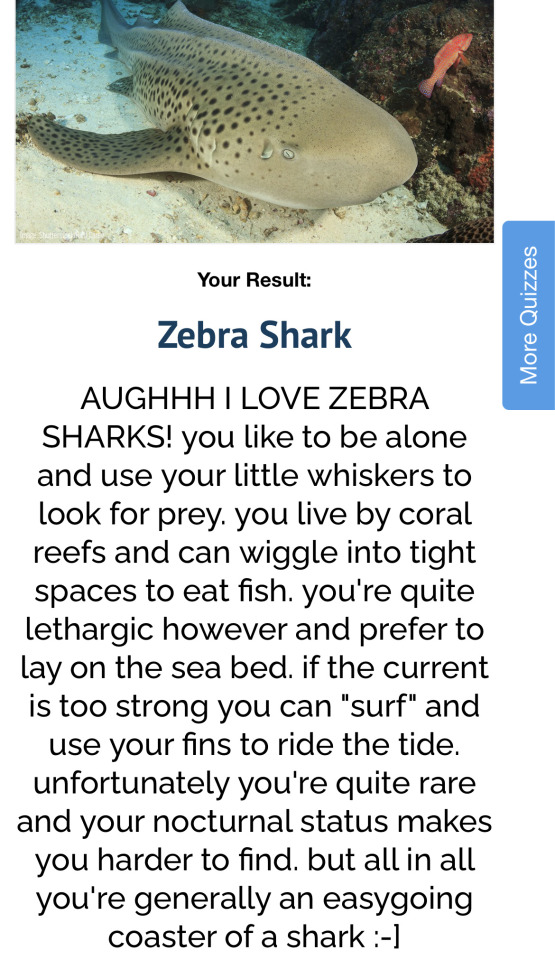
i think this is pretty accurate!!
no pressure tags: @leftsquarebracket @aanalytic @zetto52sd @forkinthegarbagedisposal @chipadip @rosebian
anyone else is welcome to join too <3
2K notes
·
View notes
Text

The original version is from here
#haikyuu!!#kagehina#hinata shoyo#kageyama tobio#colindoodles#hinata will try to fish any type of compliments from kageyama#and I think that’s funny
1K notes
·
View notes
Text

*cracks him like a glowstick* fish glows
#my art#HES A DEEP DEA FISH HE WOULD BE BIOLUMINESCENT#i have so many thoughts about this you are welcome to send asks and ill elaborate#are they top surgery scars? are they a second pair of gills? the world may never know#jrwi gillion tidestrider#jrwi#just roll with it fanart#just roll with it#jrwi gillion#gillion tidestrider#i like the idea that deep sea tritons glow for communication reasons#like they have their own morse code type thing based on how they flash their biolights
2K notes
·
View notes
Text
Wet Beast Wednesday: moray eels
This week on Wet Beast Wednesday I'll be going over something amazing, a fish with a sense of morality. You see, the moral eel is known for, what... I think I'm reading this wrong. Oh, MoRAY eel, not moral. Well this is awkward. Hang tight, I need to go redo my research.

(Image: a green moray (Gymnothorax funebris) swimming outside of its burry, with its whole body visible from the side. It is a long, slender fish that looks a bit like a snake. A long fin starts just below the head and continues down the length of the body. The body is arranged in a wave pattern. It has a pointed snout and small eyes. Its body is a yellow-green color. In the background is the sandy seafloor, dotted with various sponges and corals. End ID)
Moray eels are true eels, meaning they are in the order Anguiliformes. Yeah, I did wolf eels, electric eels, and lamprey eels before I got around to actual eels. There are over 200 known species of moray eel in 15 genera. Like other eels, they are elongated bony fish with extra vertebrae and reduced fins. Moray eels have fewer fins than most eel species, only having a dorsal, anal and tail fin that merge together and run down the back of most of the body and underneath portion of it. They achieve motion by undulating this long fin and sometimes undulating the rest of the body as well. Moray eels aren't the fastest of fish, but they can swim backwards, something almost no fish can. The head has a long snout with wide jaws. Most species have long fangs used to grab onto prey, but a few species are adapted to eat hard-shelled prey and have molar-like teeth to crush through shells instead. Probably the coolest feature of morays are the pharyngeal jaws. This is a second set of jaws located in the back of the mouth. When the eel bites onto prey, the jaws can be shot forward to grab the food and help pull it into the throat. While lots of fish have pharyngeal jaws, morays are the only ones who can extend their pharyngeal jaws forward and use them to grab prey. Morays have smooth, scaleless skin that is often patterned to provide camouflage. The skin is coated in mucus that provides protection from damage and infection. In some species, the mucus can be used to glue sand together to help reinforce burrows. Morays lack lateral lines, a system of organs found in most fish that senses changes in water movement. Their sense of smell is their primary sense. The size of morays varies between species. The smallest species is the dwarf moray eel (Gymnothorax melatremus) which reaches 26 cm (10 in) long. The largest species by mass is the giant moray eel (Gymnothorax javanicus) which can reach 3 meters (10 ft) and 30 kg (66 lbs) while the longest species is the slender giant moray (Strophidon sathete), the longest known specimen of which measured in at 3.94 m (12.9 ft).

New reaction image
(Image: a giant moray (Gymnothorax javanicus) emerging from a burrow. It is brown and mottled with yellowish patches. Its head is pointed at the camera and it's mouth is wide open, aming it look shocked. End ID)

(Image: an anatomical diagram of the skeleton of a moray eel emphasizing the pharyngeal jaws and the muscle attachments. End ID. Art by Zina Deretsky)
Moray eels are found throughout the Atlantic, Pacific, and Indian oceans. Different species are found in different temperatures and depths, though most species live in relatively shallow, warm water. Several species can live in brackish water and a few will swim upriver and live for a time in fresh water, though there do not appear to be any species that live their entire lives in fresh water. Morays are ambush predators who rely on the element of surprise. They live in small, tight places such as holes in coral, gaps between rocks, or sandy burrows. When prey passes, the eel can lunge out and grab it. Unlike most fish, the eel cannot use suction feeding due to the shapes of their mouths. They have to rely on lunging froward and catching prey with their mouths. Their mouths are adapted in shape to push water to the sides. This reduces water resistance and avoids creating a wave that could push prey away from the eel. If an eel catches prey that cannot be swallowed whole, it will tie itself in a knot while biting on to the food. By pulling its head through the loop, the eel can rip the food into bite-sized pieces. Spending most of their times in burrows also provides protection from predators, especially in juveniles or smaller species. At night, the eels will come out of their burrows to hunt sleeping prey while the larger predators are asleep. Giant morays have also been seen engaging in interspecies cooperative hunting with roving coral groupers (Plectropomus pessuliferus). The eels can fit into small crevices the groupers can't to flush prey into the grouper's path while catching their own. Morays are mostly solitary species and many can be territorial. They are known to be shy and will retreat into their burrows if they feel threatened. They are also curious and many species are quite intelligent.
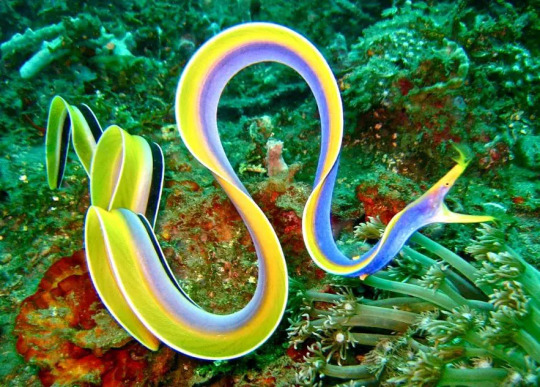
(Image: a male ribbon eel (Rhinomuraena quaesita) on a coral reef. It is a very long and slender eel with its body curved in many waves. It is brightly colored, with a blue-purple body, yellow fin and face, and a long black and white stripe running down the back half of the body. On the nostrils are two feather-like structures. End ID)
Morays reproductive strategies are poorly known and differ based on species. While many species seem to have no set mating season and will reproduce whenever they can, others will mate at the same time every year. Some species seem to have dedicated spots to lay their eggs and a few are believed to be anadromous, meaning they travel from the sea to fresh water to spawn. Meanwhile, some of the species that spend a lot of time in fresh water are catadromous, meaning they return to sea to mate. Females will lay their eggs and the male fertilize them. After this, they depart, providing no parental care. As with all true eels, moray eels begin life as leptocephalus larvae. This type of fish larvae is notable for its resemblance to a simple, transparent leaf with a head on one end. These larvae are unique and poorly understood, despite being the larval stage of a lot of different species of fish. They are unusually well developed for larvae, capable of active swimming and generally living life. In fact, some particularly large leptocephalus larvae were initially mistaken for adult fish. They feed mostly on bits of drifting organic material called marine snow and can remain in the larval stage for up to 3 years, with those in colder conditions usually taking longer to metamorphose. All leptocephalus larvae start out with no sex organs, then develop female organs, then develop male ones, becoming simultaneous hermaphrodites. They will ultimately become eith male or female and it is likely that environmental factors are the main determining factor. During metamorphosis into a juvenile, the leptocephalus can reduce in size by up to 90%, resulting in the juvenile being smaller than the larva. The process of maturation is poorly understood, but it seems that most morays will be sexually mature by three years of age.

(Image: multiple photos of a particularly large leptocephalus larva (not sure what species). It is a translucent organis, wth a body shaped like a very long leaf, narrow at both ends. In the frint is a very tiny head. End ID)
Morays are shy and generally avoid humans. Though some cultures have hunted them for food, they are often not considered a particularly good food source. Many species have high levels of chemicals called ciguatoxins in their bodies, which can lead to a condition called ciguatera fish poisoning if eaten. The largest threat to morays is habitat loss. This is especially true for the many species that live in coral reefs, which are in increasing danger due to global warming. Attacks on humans are rare and usually happen as a response to a human sticking their hand in the eel's burrow. Some of the large species could cause significant damage with a bite. Some species, usually the smaller ones, are found in the aquarium trade, thought they are not good pets for beginners as even the smallest morays are still large for aquarium fish and have some specific requirements. The curiosity many morays have has led to some becoming familiar with and even friendly to humans, often the result of feeding them. They can recognize individual humans and remember them over the course of years. Aquarium employees sometimes report that the eels will come to nuzzle and play with them and have personalities like dogs. Marine biologists and professional SCUBA divers Ron and Valorie Taylor befriended a pair of eels they named Harry and Fang at the Great Barrier Reef who would remember them and come out to visit them year after year.
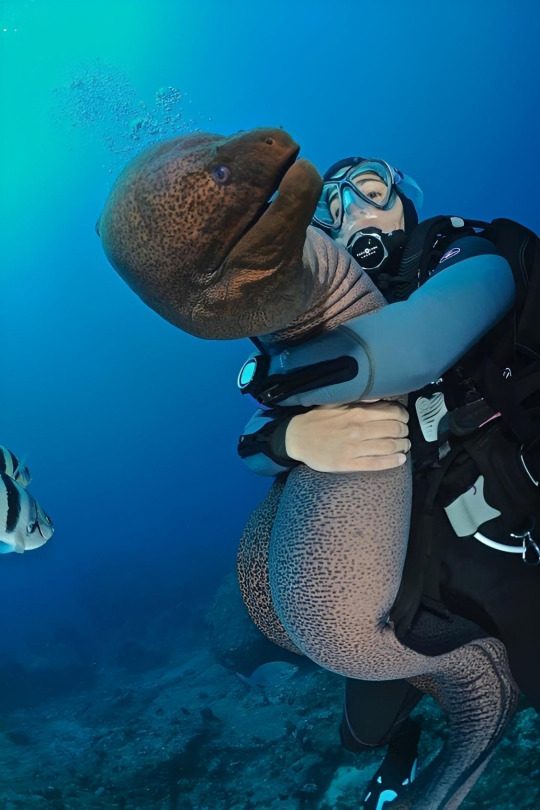
(Image: a SCUBA diver hugging a large, brown moray with black spots. End ID)
youtube
(Video: A shot video showing Valeria Taylor and a moray eel she befriended)
youtube
(Video: the song "That's a Moray", a parody of the song "That's Amore" by Dean Martin)
#wet beast wednesday#i accidentally typed moron eel more than once#moray eel#eel#anguiliformes#fish#bony fish#fishblr#fishposting#eelposting#marine biology#biology#ecology#zoology#animal facts#informative#image described#that's a moray#educational#Youtube
1K notes
·
View notes
Text


PARALOUSE (Bug/Water), SQUAKER (Water) & PARASCYLLA (Bug/Ghost)
PARALOUSE (Parasite/Louse/Perilous) is a small bug type pokemon that lives among the corals, it awaits for a fish pokemon with a mout big enough to jump in, where it will eat and replace that pokemon's tongue. Once it has gained enough strenght by weakening its host it will evolve
PARASCYLLA (Parasite/Scylla) the "Mermaid" pokemon. It emerges from its host's mouth, the one it completely fills. At this point its host is competely taken over, becoming PARASCYLLA's new tail. To further keep its "tail" in place, it will stick its lower legs through the fish's gills, securing it in place.
SQUAKER (Squawk/Cracker) is a parrot fish pokemon that inhabits the same coral reef where PARALOUSE can be found, they love to feed on coral using their strong beaks to cut and swallow large chunks of it, which sadly makes it the perfect victim for PARALOUSE.
How ever if SQUAKER manages to avoid becoming infected by PARALOUSE it can evolve into the dangerous PARROTEER (Parrot/Privateer)

PARROTEER (Water/Dark) is PARASCYLLA's natural predator, it preys upon PARASCYLLA with extreme prejudice, using its massive size and hard-as-rock head to knock them out, it then uses its bolt cutter-like beak to cut them in half by the waist, feeding only on the upper bug half and leaving the tails to sink to the bottom
PARALOUSE is based on the cymothoa exigua, a type of parasitic isopod that attached to fishes mouths replacing their tongues

PARASCYLLA is based on a twisted version of a mermaid with some inspiration is the Greek monster Scylla, a creature with the upper torso of a woman, but a lower body made out of heads and tails

SQUAKER is based on the Steephead parrotfish and its colors are based on the Scarlet Macaw
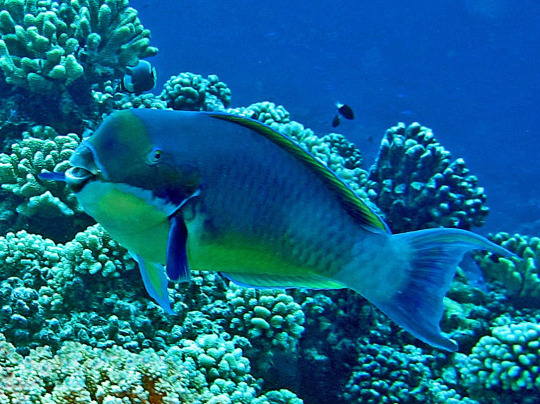
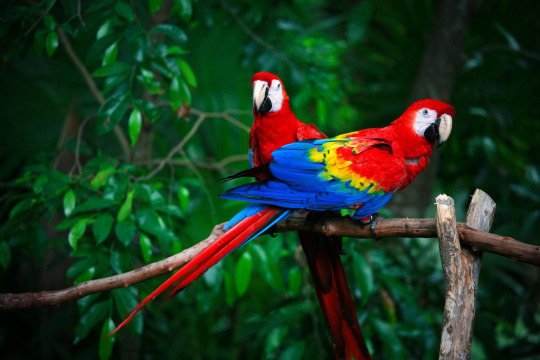
PARROTEER is based on the Humphead parrotfish and its colors are based on the Dracula Parrot, as well as being based on a Pirate
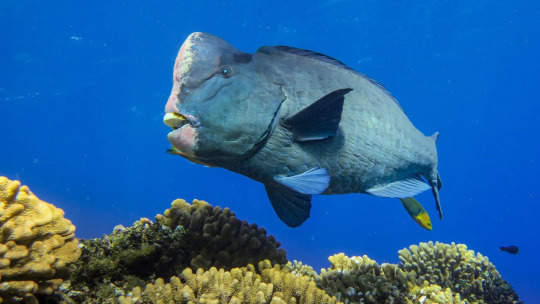
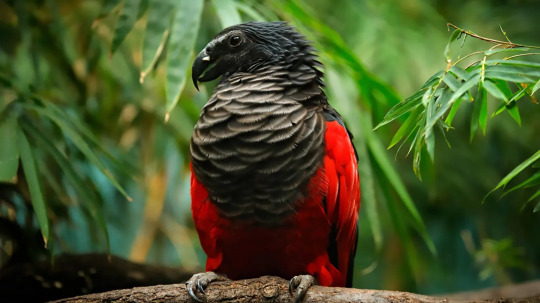
PARROTEER hunting and feeding only on PARASCYLLA is a reference to Pirates hunting mermaids as represented in some myths and popular media, like Peter Pan or Pirates of the Caribbean
At the moment, SQUAKER is the only suitable pokemon available in PARALOUSE's habitat for it to attach, but, if more pokemon were avaible it could attach to them as long as they met certain criteria:
-Being a Fish (No mammals, reptiles of crustaceans)
-Having a big enoug mouth
Here are some examples of PARASCYLLA using other fish pokemons as its tail
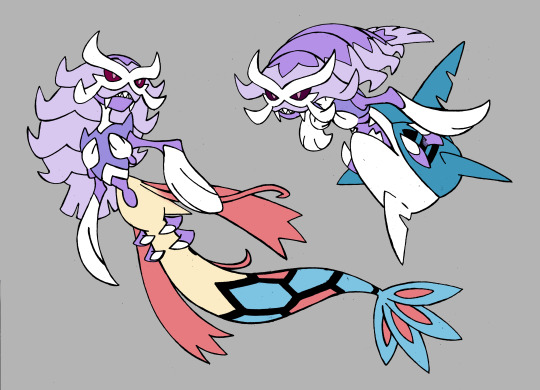


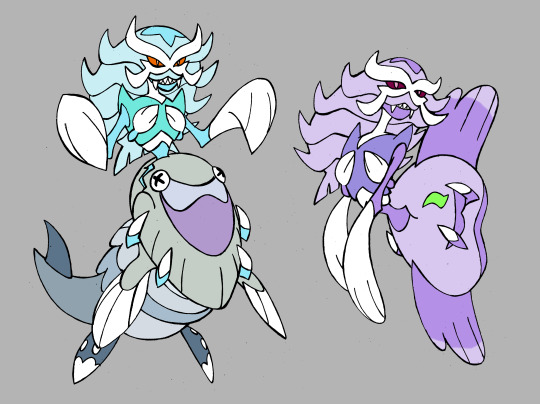
The only exception to this rule being Gygantamax PARASCYLLA

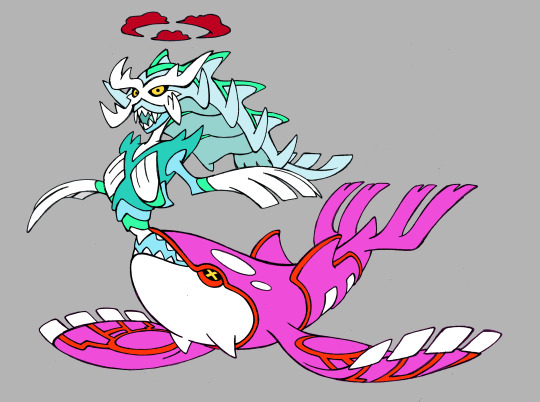
#Pokemon#fakemon#fake pokemon#fish#isopod#water type#bug type#ghost type#dark type#parrotfish#mermaid#parasite#fish pokemon#scylla#greek mythology#pirate#privateer
17K notes
·
View notes
Text

ampeel anthro sketchy
462 notes
·
View notes
Text
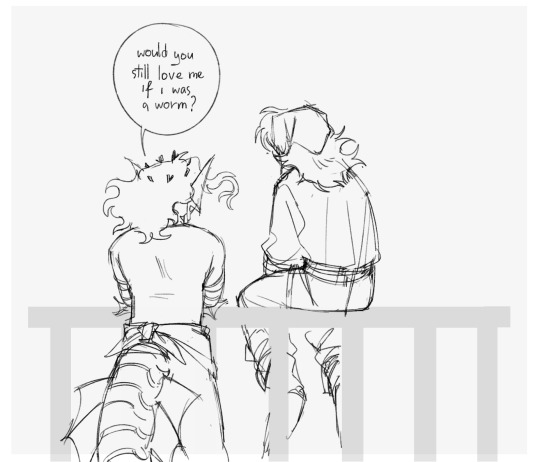


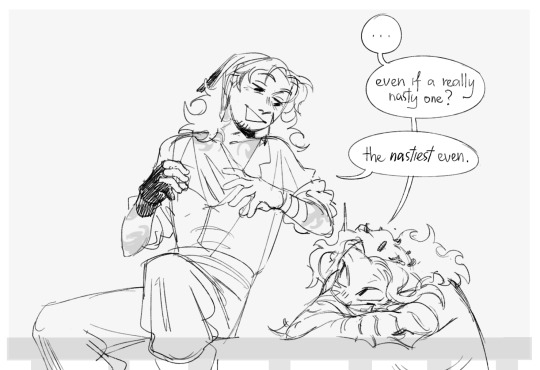
so, would you?
nothing important under the cut, you don't need to look haha

#inspired by the random youtube short i saw about how these types of questions are not really about logic but about emotion and reassurance#doesn't matter if the question doesn't make sense. you say 'yes' because you love them no matter what. not because its a worm or a bug or#or anything. its a way of saying 'i will love you when you've changed and when you're different. because it's still *you*.'#idk something about it just felt so gentle and genuine. like a pure display of affection through a silly question...#and of course fnc was the first thing i thought about because i got brainworms#jrwi fish and chips#jrwi riptide#jrwi chip#gillion tidestrider#my art#sketch#also im back from a vacation! and i feel so awful i got sick the first day home and im sitting here at 6am drawing fishes and chips#the dialog feels a little ooc but i cant figure out if it really is or if its because my head hurts and i cant think#tbh it doesn't really matter.......... but it matters to me augh#ALSO yes the under the cut bit is about episode 109. i dont know if its clear or not
2K notes
·
View notes
Text


ᯓᡣ𐭩
498 notes
·
View notes
Text


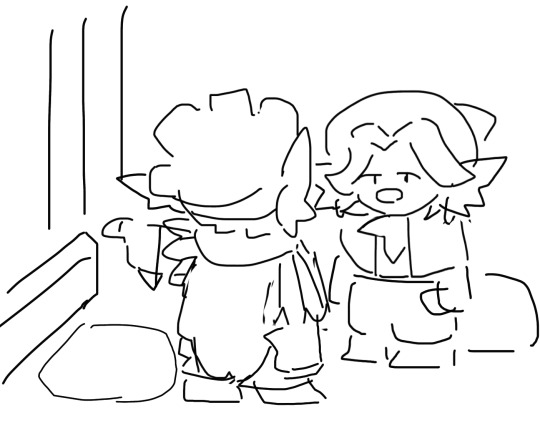
Trolls Pirate AU
In my head I imagine he saw the hat in a store saw his name on it and stole it
"Spruce we need this hat. All those stories about pirates the leader always has a hat and I don’t have one. If we're going to perfect we need it. Look it even has my name on it, we have to get it.”
#trolls#trolls au#trolls pirate au#trolls john dory#John Dory#trolls bruce#all the brothers being named after something in nature is my fav detail#branch spruce and clay are obvious#Floyd is after a type of rose and John Dory is a fish :33
447 notes
·
View notes
Text
I’m glad you all like my fish so far! I have been drawing a lot of them and have many left to post so be on the lookout for fishies! 🐟🐟🐟
#you may see your fav! I’ve got lots planned too#I want to make sticker sheets based off of size and water type#like big freshwater big salt water#deep sea and domestic/pet#stuff like that#fish are very fun to draw btw I recommend it#not comics#smiling at some of the replies bc I already have some of them drawn hehe
403 notes
·
View notes
Text
I've seen people make human AUs and equate Winter's scavenger fascination with being like. a crazy cat person. and while that is really good and I do think Winter would and should be crazy about cats, I do think like... if you are going to give him an equivalent interest you gotta go nicher than that. Like, being a Cat PersonTM is a thing like half the population identifies at. You GOTTA go stranger. He needs to be regularly attending reptile conventions. He needs to daydream about owning a praying mantis. He needs to yell at underpayed PetSmart workers about how small the fish tanks are that they keep the bettas in. He needs to be offered the chance to hold a snake and he needs to talk to that snake like he's greeting the queen. He needs to show you photos of tarantulas please please please look at his pictures please of his tarantulas
#in my. non magic AUs I mean where the scavenger characters just kind of stop existing as opposed to like. the scavenger characters Are The#Animals because I think the ways that get handled can get pretty dicey really quickly especially depending on the like#type of animal one picks to do that with if you don't make them just The Dragons Instead which I think is more appropriate#wings of fire#wof#human wof#winter#winter wof#i don't mean to imply that fish are a weird pet to keep but i do mean to imply that like#being a cat person is not necessarily a personality trait so much as it is a like... preference of a person. but if somebody told me they#were a “fish person” the way they would identify as a dog/cat person I WOULD count that as a personality trait and I'm saying whatever that#trait is winter has it
403 notes
·
View notes
Text
My favorite kind of ship is the acts of service hoe finding a guy that got never taken care of and deciding to STEP UP



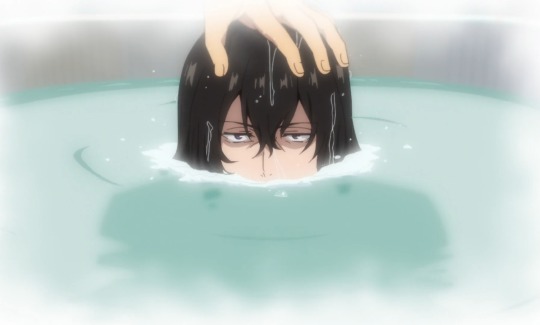


#crawls to my followers#I SWEAR I'LL STOP COMPARING THEM#i just want Ash and Rei to get treated right y'know#also the type of animes to be like#'we don't exactly say that they're gay but you'll see them act domestic and be perceived as partners by everyone else'#VDHSHSSHSUSHSH#Eiji and Kazuki best housewives fr 🥰🥰🥰#waut nvm only Eiji is the successful housewife Kazuki is a loser comedian 😔#banana fish#buddy daddies#eiji okumura#ash lynx#asheiji#rei suwa#kazuki kurusu#mimi posts
2K notes
·
View notes